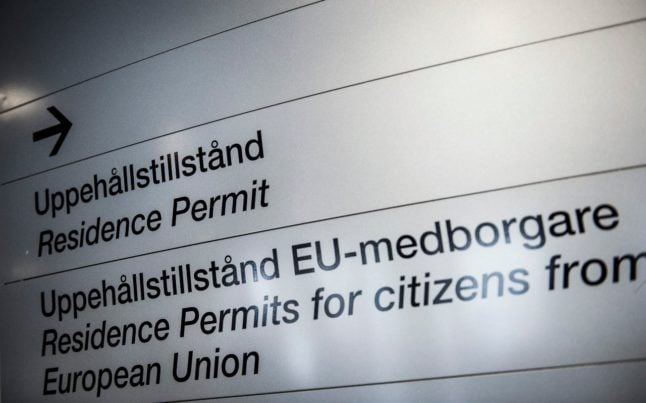The end of the transition arrangement will mean that British people living in Sweden will have to apply for residency status under the new arrangements.
For Brits in Sweden, the Swedish government on November 11th passed a bill unilaterally giving British citizens and their families many of the rights that they used to have as citizens of the European Union.
-
EXPLAINED: What Brits need to know about Sweden's new post-Brexit bill
- How to get Swedish citizenship or stay permanently in Sweden
When can I apply for residency status?
On Tuesday, December 1st, both online and downloadable forms will be posted to this web page which British citizens can use to apply for residency status.
What do I need to send with my application?
You will need to send:
- A copy of your passport or national ID card.
- Documents that show that you had a right of residence before 31 December 2020 and that you still have it thereafter.
Do I need to be in Sweden to apply?
No you don't. You only only need to fulfil the criteria. You can apply from the UK, or a third country.
What documents are sufficient to prove my right of residency?
If you do not already have permanent residency and a residence card issued by the Swedish Migration Agency, you will need:
- a certificate of employment if you are an employee
- a letter of admission to an educational programme if you are a student
- a corporate tax certificate and registration certificate for the company if you are a sole proprietor
- a statement of pension benefits if you are a pensioner
- a bank statement if you plan on living off your capital
Other possible ways of proving a right of residency will be detailed on the form when it is published.

File photo: Bench Accounting/Unsplash
What if I already have permanent residency?
If you have previously applied for and received a document from the Migration Agency confirming that you have permanent residency, then you only need to send in a copy of your passport or national ID card.
This doesn't apply, however, if you have lived for more than five years in Sweden and believe you have the right of permanent residency under the EU law which automatically grants permanent residency to those who have lived in a country for more than five years.
If you have never confirmed this right with the agency, you need to apply for residency after December 1st like everyone else.
If you have 'permanent uppehållstillstånd' (i.e. the Swedish national immigration status, independent of EU law) you do not need not apply at all.
How do I apply for my family to stay in Sweden with me?
Family members of British citizens are also eligible to apply for this status, including for example children and partners. You can apply for them to stay in the same form. You will need:
- copies of every family member’s passport or national ID card
- documents that show the family relationship, for example a marriage certificate if you are spouses or a corresponding document if you are registered partners
- joint accounts, insurance policies, bills or the like if you are cohabiting without being married or registered partners
- birth certificates for children
- adoption documents if the child is adopted
- documents that show that any children over the age of 21 are dependent on the parent for their means of support
- other documents that show that you are related to each other if you are not parents and children
- an authorisation if you are a representative for all family members who are over 18.
- live in another country, such as a housing contract or equivalent civic registration
- work or are a sole proprietor in Sweden, which is verified in the same way as in an application for residence status
- lived in another country and worked in Sweden at the end of the transition period
- and a copy of your passport or national ID card.




 Please whitelist us to continue reading.
Please whitelist us to continue reading.
Please can someone advise me which annual health insurance is acceptable to the Skatteverket when starting the process of applying for a personnummer? I am a British citizen. Thank you.
If you have an S1 then there is no need to obtain annual health insurance. Otherwise you may need private insurance for SEK10m – and this is difficult – I tried without success. After days of reading web pages and email exchanges with migrationsverket and skatteverket I managed to apply for a PN and residence in the space of a couple of hours today thanks to help from staff in MV and SV.